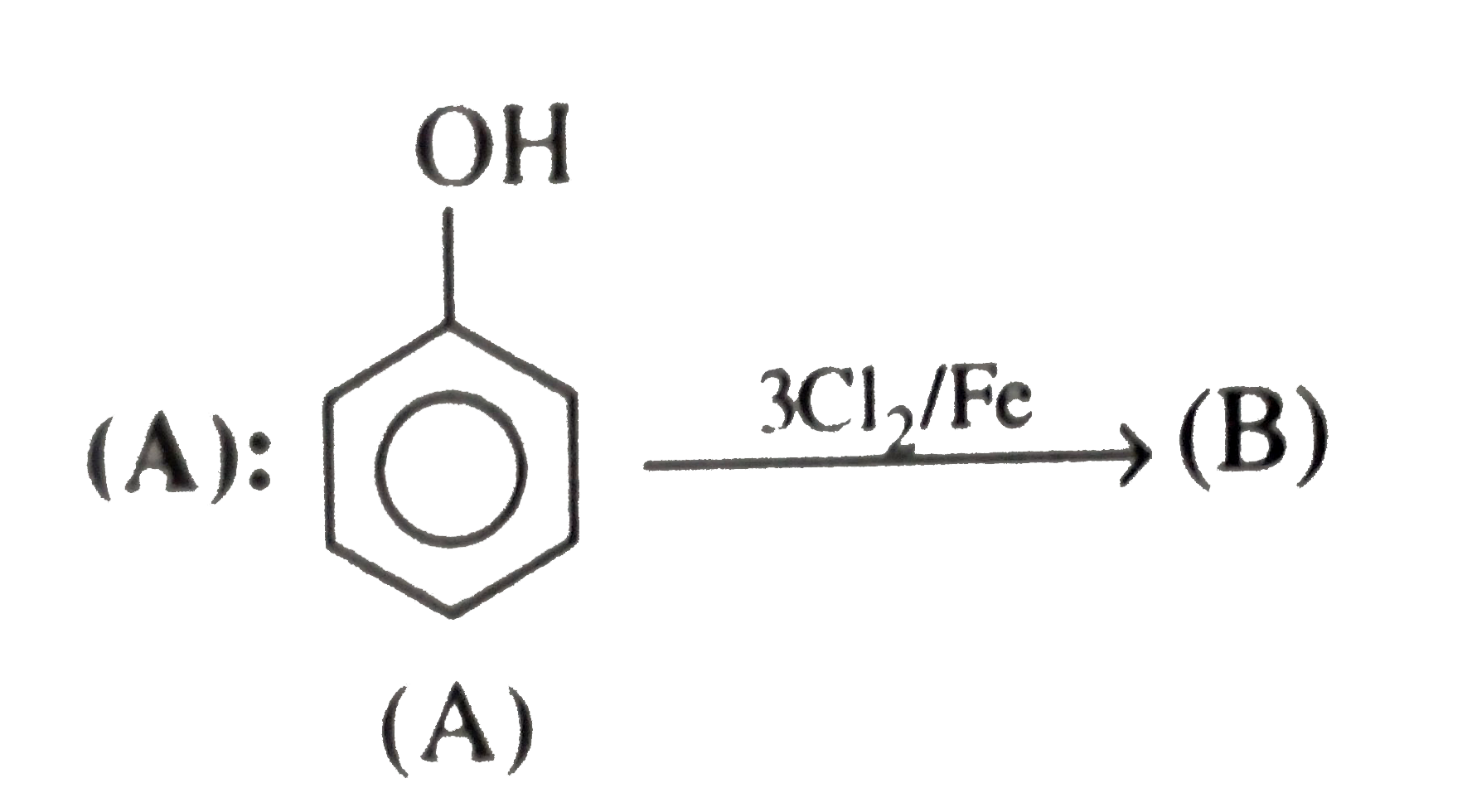Statement-I: 

Statement-II Phenol cannot be chlorinated because the ring is susceptible to oxidation by Cl2.
If both statement-I & statement-II are true & the statement-II is a correct explanation of the statement-I
if both statement-I & statement-II are true but statement-II is not a correct explanation of the statement-I
If statement-I is true but the statement-II is false.
If statement-I is false but the statement-II is true.
The correct Answer is:A
Topper's Solved these Questions
- ALCOHOL, ETHERS & PHENOL, OXIDATION & REDUCTION BOOK - BANSALCHAPTER - ALCOHOL, ETHERS & PHENOL, OXIDATION & REDUCTION EXERCISE - Exercise 3
28 Videos
- ALCOHOL, ETHERS & PHENOL, OXIDATION & REDUCTION BOOK - BANSALCHAPTER - ALCOHOL, ETHERS & PHENOL, OXIDATION & REDUCTION EXERCISE - Exercise 1
86 Videos
- CARBOXYLIC ACID DERIVATIVESBOOK - BANSALCHAPTER - CARBOXYLIC ACID DERIVATIVESEXERCISE - Exercise 3
23 Videos
Similar Questions
Statement-I: Absolute value of E0red of an electrode cannot be determined.
Because Statement-II: Neither oxidation nor reduction can take place alone.
View SolutionStatement-I: Absolute value of E0red of an electrode cannot be determined.
Because Statement-II: Neither oxidation nor reduction can take place alone.
View Solution
Knowledge Check
Assertion (A):

The product (B) is
Reason (R ): Phenol cannot be chlorinated because the ring is susceptible to oxidation by CI2.AIf both (A) and (R ) are true and (R ) is the correct explanation of (A).BIf both (A) and (R ) are true but (R ) is not the correct explanation of (A).CIf (A) is true but (R ) is false.DIf both (A) and (R ) are false.Statement I: CuI2 does not exist.
Statement II: I− ions are very susceptible towards oxidation by Cu2+ ions.AIf both Statement I and Statement II are true and Statement II is the correct explanation of Statement I.BIf both Statement I and Statement II are true but Statement II is not the correct explanation for Statement I.CIf Statement I is true but Statement II is false.DIf Statement I is false but Statement II is true.Statement I: NO is 3e-donor.
Statement II: The antibonding electron of NO is very much susceptible to donate apart from its lone pair.AIf both Statement I and Statement II are true and Statement II is the correct explanation of Statement I.BIf both Statement I and Statement II are true but Statement II is not the correct explanation for Staement I.CIf Statement I is true but Statement II is false.DIf Statement I is false but Statement II is true.
Statement-I : Force cannot be added to pressure.
Statement-II : Becausee their dimensions are different.
View SolutionStatement I: Fluorine has highest oxidizing power.
Statement II: Electron affinity of chlorine is higher than that of fluorine.
View SolutionStatement I: Fluorine has highest oxidizing power.
Statement II: Electron affinity of chlorine is higher than that of fluorine.
View SolutionStatement I: Fluorine has highest oxidizing power.
Statement II: Electron affinity of chlorine is higher than that of fluorine.
View SolutionStatement I The electronic structure of O3 is

Statement II structure is not allowed because octet around O cannot be expanded.
structure is not allowed because octet around O cannot be expanded.
View Solution
